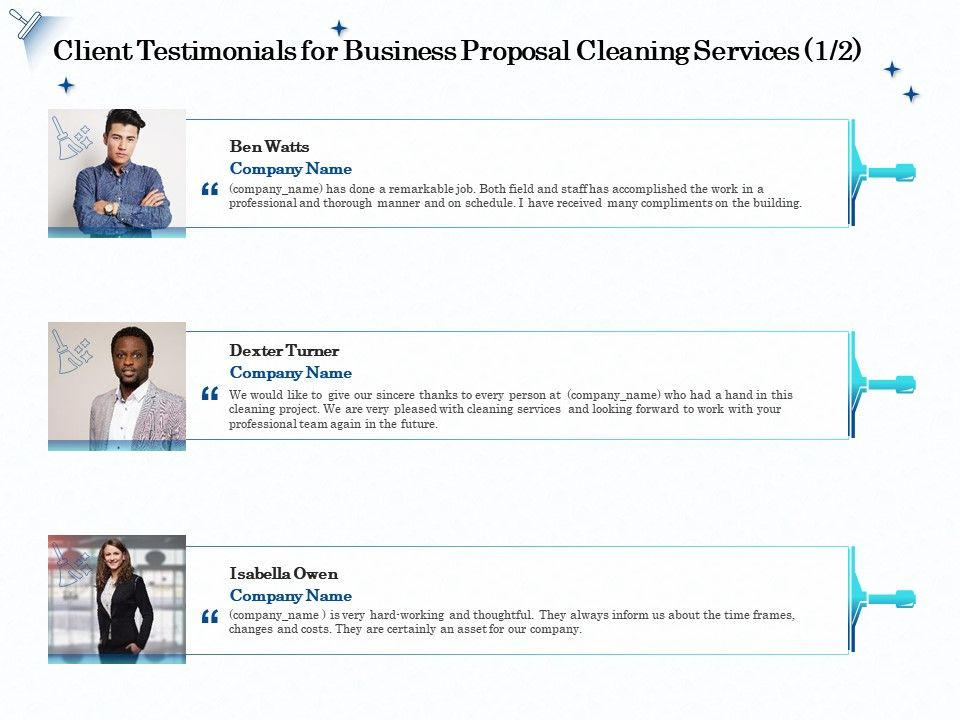15 Tips to Create the Best Client Proposal Templates

Table of Contents
- What is a Business Proposal?
- Elements of a Business Proposal
- 15 Tips for Creating Client Proposal Templates
- Client Proposal Templates
- Key Takeaways
- Conclusion
- FAQs
Zig Zaglar has rightly said, “For every sale you miss because you’re too enthusiastic, you will miss a hundred because you’re not enthusiastic enough.”
If a business does not sell, it will not make money and, as a result, will fail. For this reason, all businesses need people who can write client-winning proposals. But drafting an excellent proposal requires more than just enthusiasm. When you speak with a potential client, you might feel an adrenaline rush. However, you’re also concerned about the possibility of being rejected.
Although you recognize that issues beyond your control may have resulted in rejection—for example, the prospect’s budget—you still want to make sure you submit a compelling proposal.
Precisely, a well-written business proposal can make the difference between landing a new client and losing one. This in-depth guide shows you how to close more deals, make more sales, and achieve all your business goals through well-written business proposals.
Let’s dive in!

What is a Business Proposal?
A business proposal is a document used by an organization to persuade a potential buyer to buy their goods or services.
Business proposals, like sales documents, feature an outline of how the company can benefit the client, a value proposition, the scope of work, pricing estimates, projected completion dates, and project costs.
Business proposals can be categorized into solicited or unsolicited. Solicited proposals are sent after a client requests them. They can be formal or informal. On the other hand, unsolicited proposals are similar to a cold email; they must be formal.
Now that we understand what a business proposal is let us understand the steps to writing a business proposal.
How to Write a Business Proposal?
It’s critical to know the business you’re writing for before writing your business proposal. An initial conversation or meeting with a new client can also be beneficial to ensure that you completely understand the problem they’re seeking to solve and their goals.
Start on your company proposal after completing your research. Although there is no one-size-fits-all strategy to crafting a business proposal, let’s look at some common elements.
1. Title page
A simple and attractive title page is a must. Here, you must give some fundamental facts. Please introduce yourself and your company. Include your name, your company’s name, the date the proposal was filed, and the client’s or individual’s name to whom the proposal is being sent.
Your title page should strike a balance between interaction and professionalism. Because it sets the tone, make sure yours is sleek, pleasing to the eye, and not too “out there.”
Here’s an example.

2. Table of contents
A good user experience is the key in all interactions, and business proposals are no different. Your proposal need to make things as clear and accessible for people reading your proposal. A table of contents is the first step.
Through the table of contents, your client knows exactly what your proposal will consist of. If you’re sending your proposal electronically, a clickable table of contents that jumps to the various sections of your proposal for simple reading and navigation is a good idea.
3. Executive summary
The executive summary explains why you’re submitting the proposal and why your solution is the best option for the potential client. It’s important to be specific here – why are you the greatest option for them?
The benefits of your company’s products or services and how they can address your potential client’s problem are outlined in your executive summary, which is similar to a value proposition. Even if they don’t read the entire proposal, the prospect should have a good sense of how you can help them after reading your executive summary.
Here is an example.

4. Company overview
When proposing a service to a client, it is important to showcase that you/the company is qualified for the job. Here you answer questions such as, Are you capable of resolving this prospect’s issue? Why should they have faith in you?
Include case studies of client success stories and applicable awards or accreditations to increase your credibility and authority.
5. The proposed solution/idea
This is where you provide a solution to the problem. This phase, like the last, requires a focus on specificity and personalization. Make sure your proposed solution is tailored to the client’s requirements to know it was written just for them.
Let them know what deliverables you’ll be providing, how you’ll provide them, and when they can expect them.
6. Budget and timeline
This is where you go further over the project’s timing, cost, and payment schedules. It’s a summary of what you and the client agree to if they accept your proposal. Before sending the proposal to the customer, double-check the terms and conditions with your legal staff.
7. Signatures
You must add a signature box for the client to sign and understand precisely what they’re signing. This is also a good time to ask the prospect to contact you if they have any unanswered questions that you can answer.
Those are some basic elements of every proposal. We are ready for the 15 tips to make proposal templates.
15 Tips for Creating Client Proposal Templates
There is a lot to keep in mind when drafting the perfect business proposal. Here are some of our best tips.
1. Make it precise
“The first impression is the final impression,” as the saying goes. However, you just have a few seconds to make an impression on potential consumers or investors in this situation.
Your sales proposal’s first look should be captivating and pique your prospect’s interest. Avoid utilizing any comprehensive or lengthy descriptions; else, your entire game plan will backfire.
All you need is one catchy remark to get your sales presentation moving in the right direction. Of course, curating the final look is a complicated process that necessitates continual efforts and changes.
Make a sales prospect that outlines and covers all areas that entice your prospects to contact you. You may rest assured once you have their attention.
2. Address the problem statement
You want to make sure that your prospects see everything you have to offer. On the other hand, your prospects are unconcerned about everything; all they want is an efficient and well-organized answer to their problems.
As a result, you simply need to address and input the challenges and the solutions offered by your prospects that you have previously discussed.
Here is an example.

3. Explain the why
This is probably the most important part of your proposal. You need to explain why your solution is perfect and why you’re the ideal partner.
Craft your plan to make it seem like declining the proposition would be like walking over dollars to pick up cents. Your offer should exceed their expectations, and you should do all possible to avoid any friction or complaints along the route.
4. Add data and visuals.
You want your company proposal to grab your prospect’s attention and enable you to stand out from the other proposals they’ve seen. One of the most effective methods is to present real, quantifiable statistics that emphasize your company’s value.
You may establish authority and make yourself more convincing if you can locate some relevant, fascinating figures that show what you have to offer – it also helps to use visuals such as charts and graphs to enhance your proposal.
5. Include pricing options
It’s easy to lump everything into one option in your sales pitch regarding the offering itself. However, it is possible that it will not be effective. As a result, it’s critical to have a level of flexibility.
So, by giving them three possibilities, they will be able to choose the one that best suits their needs in terms of solutions and capital.
The first alternative is to use a simple formula to provide prospects with low-cost options. A second option is a medium option, which includes a solution, benefits, and typical cost. Finally, an advanced alternative with a cost-effective solution would be the last option.
6. Create a sense of urgency
Typically, a business/individual receives various business proposals for a job they want to get done. This is why your business proposal must create a sense of urgency for the client. You can discuss why it is best to start the project soon, for example, because of upcoming topical days relevant to digital activation.
7. Keep it simple and attractive.
There are no rules for how long a business proposal should be. Yours should be as long as it takes to express the facts you’re trying to communicate.
However, you should prioritize quality above quantity. Avoid using too much business jargon and keep your words short and clear. You want your proposal to be simple enough to understand for anyone who picks it up. So don’t go overboard with your opulence.
8. Include client testimonials
It’s simple. No matter how talented a salesperson you are or how polished your language is, the prospect can tell you’re biased. You’ll let them know how fantastic your firm is, of course, since you want them to use it. Nobody expects you to be entirely neutral about your business.
Incorporating client testimonials and endorsements into your sales pitch, on the other hand, lends credence to your claims. Furthermore, if the statements come from someone else, your prospects will be more trusting of them.
Here is an example.

9. Incorporate video
You can incorporate multimedia assets in an online proposal instead of a document or PDF to improve the proposal experience. They can add depth and interest to your document.
Extras like video can make an impression — especially on prospects who are visual or auditory communicators — whether you use it at the beginning of your proposal as an introduction or in the project breakdown to verbally describe some of the more complex elements.
10. Clear calls to action
Prospects require guidance. If you don’t clearly identify the next steps, even the strongest proposal will only get you far. As a result, you must ensure that the reader understands what to do next after reading your proposal.
The best way to get there is with a clear call to action. Define and emphasize what people should do in response to the interest your proposition has sparked. You risk leaving your reader in the dark if you don’t provide that direction.
11. Stay on brand
Don’t be scared to let your organization’s personality shine through in your proposal. Keep your brand consistent and show the client what distinguishes you from the competition.
12. Clarify your terms and conditions
Terms and conditions can be complicated and might put off your client. It is important to make them simple and clear to understand. It’s a summary of what you and the client agree to if they accept your proposal. Before sending the proposal to the customer, double-check the terms and conditions with your legal staff.
13. Include up-sell and add-on opportunities
You won’t get what you don’t ask for, and if you don’t give your clients the chance to look deeper into your ideas, they won’t. If you want to make the most of a reader’s curiosity in your business proposal, you should include some further information about your company for them to act on. They’re interested in learning more about what else you have to offer.
14. Include key takeaways and a summary
Because they are busy, your prospects might skim or skip to the end of your business proposal. To make it easier for them, include a brief summary of your plan in the final paragraph. This will immediately tell them if it is worth their time.
You can also make things easier for visitors by using headers to point them to key portions of your summary and where to start reading it. This will pique the interest of potential customers.
15. Mention the next steps
You don’t want the prospect to think, “And what’s next after this?” after reading your sales presentation.
To make it easy for them to take the next step, end with a clear call to action. “If you’re interested, a free consultation is available by…” or “We’d love for you to contact us at…” and so on.
You make it easier for them to figure out what to do by doing so. You might want to put a small contract at the end to seal the deal!
These are some of our best tips to draft the perfect business proposal for your client.
Client Proposal Examples & Templates
Are you looking for some inspiration before you start writing? Here are some sample business proposal templates that you can use to aid the creation of your proposal.
1. Content proposal template for freelancers
This proposal lays out the procedures that must be followed to assist the prospective client in increasing their search engine exposure and traffic. They’ve developed a table for each stage of the project’s timeline, with details on each deliverable and its due date.
2. Sales proposal template for businesses
While this template is straightforward, it gives the prospect an overview of the products and services you provide and how they can be combined to create a unique solution to the client’s problem or objective.
3. Social media marketing proposal for agencies
This template combines eye-catching graphics with well-written material and a sturdy framework. It’s an excellent choice for any agency searching for a proposal template that allows for intelligent structure and effective communication of pertinent information.
Key Takeaways
- A business proposal is a document used by an organization to persuade a potential buyer to buy their goods or services.
- When it comes to writing business proposals, there is no one-size-fits-all approach, but there are certain elements every proposal must have.
- Business proposals should be simple, attractive, and precise, with clear calls to action.
- Including data, visuals, and video content in business proposals makes it interesting and authentic.
- Social proof in the form of client testimonials adds a lot of value to your business proposal.
- You must clearly mention terms and conditions in your proposal and create a sense of urgency to nudge the client.
Conclusion
Now that you have a good idea of the importance of business proposals and how to create client proposal templates for your business, you are ready to start pitching your services to clients.
FAQs
A business proposal is a document used by an organization to persuade a potential buyer to buy their goods or services. Business proposals, like sales documents, feature an outline of how the company can benefit the client, a value proposition, the scope of work, pricing estimates, projected completion dates, and project costs.
Business proposals can be categorized into solicited or unsolicited. Solicited proposals are sent after a client requests them. They can be formal or informal. On the other hand, unsolicited proposals are similar to a cold email; they must be formal.
There is no one-size-fits-all approach to writing business proposals, but you must make sure that certain elements are included. These are,
1. Title page
2. Table of contents
3. Executive summary
4. Statement of the problem/issue/job
5. Approach
6. Methodology
7. Budget and timeline
8. Qualifications
A business proposal is a road map for your firm that, in theory, anyone should be able to follow, provided the proposal is written well enough. It explains your goals, how you will conduct business, and what expenses and profit you may expect.
Latest Blogs
Explore how Google’s 2025 AI search updates triggered ranking chaos. Learn actionable strategies to adapt your SEO for AI Overviews, zero-click searches, and SERP volatility. Stay ahead now.
Learn how to rank on AI search engines like ChatGPT, Perplexity, and Gemini by optimizing your content for authority, structure, and relevance. Stay ahead in AI-driven search with this strategic guide.
Explore the best healthcare SEO services for your medical practice. Improve online visibility and effectively reach more patients in need of your services.
Get your hands on the latest news!
Similar Posts

Freelancing 101
5 mins read
11 Resources For Designers to Find Freelance Jobs Online

Freelancing 101
6 mins read
30 Freelance Industry Statistics to Get You Started

Freelancing 101
5 mins read